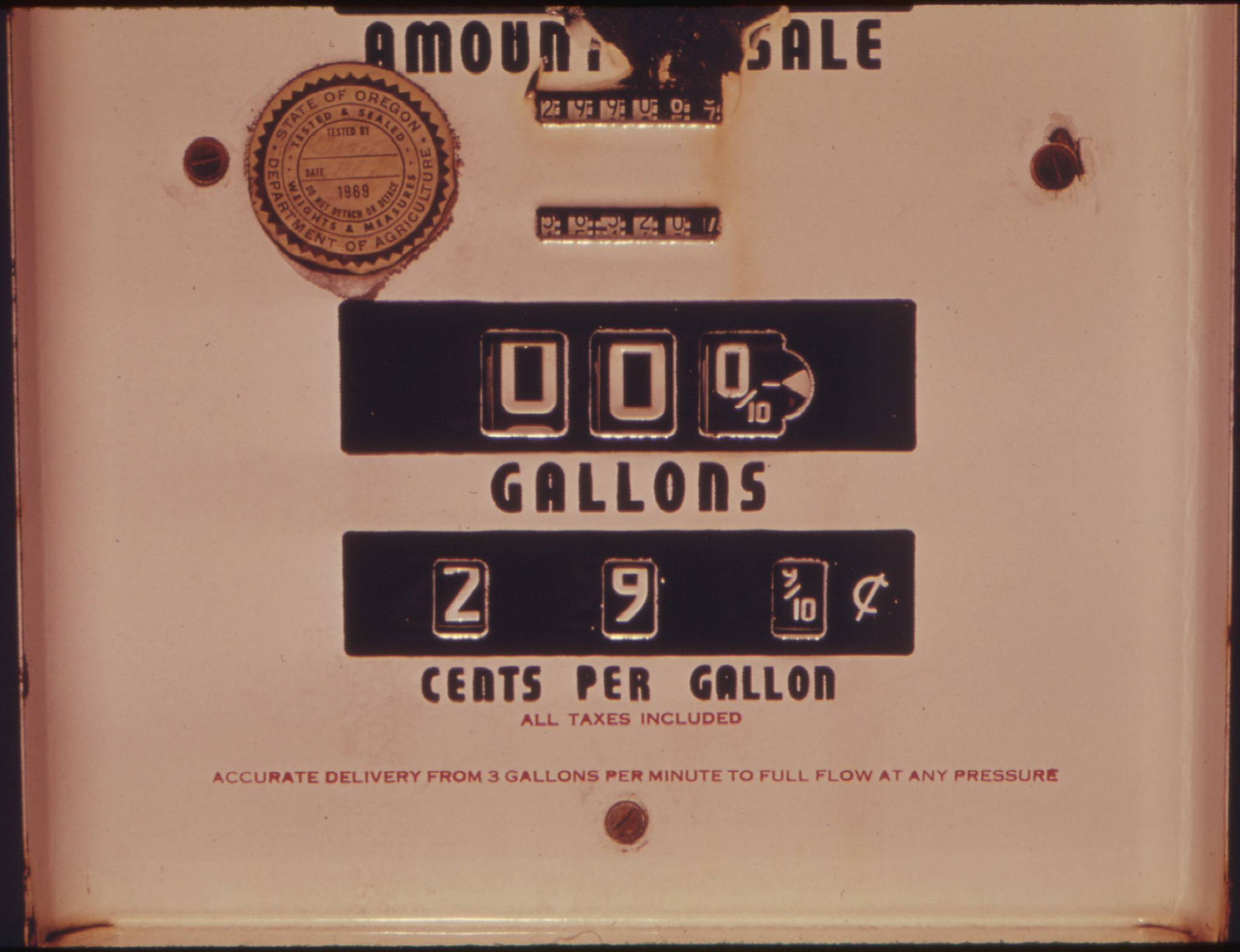Growth.
It’s what every marketer talks about. It’s what every executive craves. It’s essential to successful business. And it should be easy to achieve, right? Not so much.
It turns out that even maintenance of a marketing program can be a lot of work. Finding time to focus on growth can be challenging after you’ve done all the work it takes to just get things produced and out the door.
But that doesn’t take away from its importance.
Never fear. We’ve got your back. Here are 5 ways that we help clients build a foundation for growth and increase performance over time.

1) Don’t Give Up on the Core
I’ve sat in a lot of conversations throughout the years in which clients say something to the flavor of, “You know what, we’ve decided that our blog content and the in-depth content on our site isn’t getting us very much. We’re going to pivot to _________.”
It doesn’t matter what you fill in the blank with, this statement can be disastrous for a brand that has worked hard to build up their domain authority and brand visibility by creating consistent high-quality content.
High-quality content that lives on your site should still be at the core of your marketing strategy in 2022. Even if it doesn’t feel sexy or even fun. It simply drives results.
Your domain’s authority, and therefore its ability to attract traffic from Google, depends on the creation of consistent quality content on your site. This is typically organized into content clusters. A content cluster is a set of a single long-form pillar page surrounded by a collection of blog posts all focused on a key topic for your brand (read more about that here).
The beauty of this is that as you continue to invest in your blog it will give back to you in growth, especially if you stick with it for six months (check out this post if you want to learn more about the growth you see from longevity).
So, bottom line, stick with the foundation. It will pay you back in not only maintaining where you are but driving growth over time.
2) Set Goals on a Quarterly Basis — Not Annually
Another key factor in growth is setting ambitious but achievable goals that span a short timeframe. Things change quickly in the world of digital marketing, so waiting more than three months to reflect back on what you’ve done and pivot as a result can be disastrous.
In my recent post on improving your marketing program, I proposed setting 30-day SMART goals to help you get stuff done. This still rings true here. But, I don’t think you should change your whole program’s strategy on 30 days of results. It’s just too short a time period to make a decision. After three months, you’ll be able to determine if a data point is a blip or actually a trend. At that point, it’s time to start asking bigger questions about what you should be doing differently. When you do start thinking through new strategies, I recommend you do the following:
- Identify what is working well and then work to amplify it. This is much easier than fixing something that’s broken.
- Before you throw away a tactic, determine whether it is the whole tactic that is broken, or if a small tweak will send your performance on an upward trajectory.
- Once you run out of high-performing tasks to amplify and tactics to tweak, then look at what you need to stop doing altogether and make the brave call.
3) Manage a Tight Marketing-to-Sales Handoff
The marketing-to-sales handoff may seem like a very process-oriented topic to put in a post about continual growth but hear me out.
We’ve found that the programs that grow the fastest have nearly constant communication about the sales handoff. This may take the form of messages throughout the month, data transferred between the marketing software and CRM about lead quality, or a monthly meeting between the two teams.
Here’s why this matters. Typically, these conversations center on the quality of the leads that are being sent over to sales for personal follow up from a sales development rep (SDR). Based on what this feedback is, major insights can be uncovered about what makes the program effective.
A classic example is when someone discovers that, although most leads come in through paid search, SQLs are only generated through paid social and organic search. For them, this means that it ais time to switch priority in paid media from PPC, that has a lower cost per conversion, to paid social. Even though it costs more per contact, it drives more qualified leads, justifying the higher cost. This insight would have been lost if data wasn’t passed and conversations weren’t happening between marketing and sales.
4) Keep a Close Eye on Your Data
It’s highly likely that the goals we discussed earlier focus on the number of leads, marketing qualified leads, sales qualified leads, or opportunities you drive throughout the course of a year. It’s essential for you to have a deep knowledge of your data if you want to drive consistent growth.
For each of your tactics, my recommendation is to choose the one to three key metrics that drive success for that tactic. For something like email, this is easy: delivery rate, open rate, and clickthrough rate. For other tactics, it can be more difficult to identify these metrics, but it’s important work.
Once you’ve identified these metrics, you need to then make sure you have a thorough understanding of what each of them means. Let’s take a look at each of the three email metrics I mentioned above:
- Delivery rate: A low delivery rate tells me that I have an email list issue and need to work on the quality of my list to improve email performance.
- Open rate: This tells me that I’m not connecting with my audience effectively with subject lines and need to optimize them so that my users get to the good stuff inside the email.
- Clickthrough rate: A low clickthrough rate can mean any number of things. But, commonl, it may mean there isn’t a strong connection between the reason the user opened the email and what we’re asking them to do once they open it. It may also mean that we haven’t provided them with enough incentive to act. At the end of the day, I think of the concepts of relevance and urgency as being huge to getting users to click through in an email.
Once you’ve done this work for all of the core tactics on your program, you can set up a dashboard to watch trends on these key metrics and make adjustments if they drop or as they grow, building from strength to strength.
5) Run Optimization Sprints
We need to optimize! This is another common phrase that is spoken over and over again by marketers. It’s also true. But it’s often hard to knuckle down and focus on optimization because all of the other project demands that arise on a daily basis. That’s why we recommend tackling optimization in sprints.
When we’re selecting projects for an optimization sprint for our healthcare and tech clients, we’re definitely looking deep into our data and identifying which optimization efforts could:
- Increase traffic
- Improve conversion rates
- Improve lead quality
If you’ve been watching your data, you’ll have a good idea about which of the three options above is a bigger need. For example, if you know you have good conversion rates, you can probably focus your efforts on optimizing the amount of traffic you’re driving or the quality of the leads (which often comes back to where your traffic is coming from to begin with).
An optimization sprint turns optimization into a time-bound project with a beginning and end date. It then becomes far easier to fit into a schedule and ship. Here are a few tips for running an effective optimization sprint:
- Choose a specific number of optimization experiments to tackle in the sprint -— then capture them in a brief.
- Be specific about the metric you’re trying to optimize (see my section on keeping a close eye on your data above).
- Make sure you have the tools (or the platform) to run the test effectively. Many tools like HubSpot have built in optimization tools. If you don’t have a platform with built in tools, you can invest in a third party tool.
- Accept the fact that once launched, your tests may need to run longer than the sprint. It’s all about running a test long enough to gather enough data to make a reliable decision about how to change your marketing.
- Common places to start optimizing are forms, landing pages, and email performance.
Want to learn more about how to develop a marketing program focused on continuous growth? Schedule a marketing consultation with us today.
Don’t miss out, get Brave News now
Join the ABN community and be the first to learn about trends in inbound marketing, branding, and web design.






